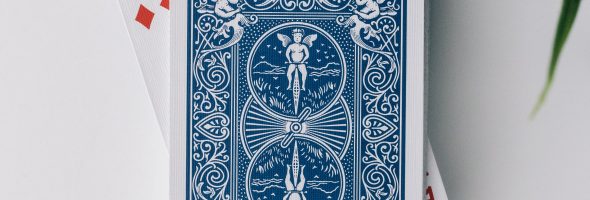Subtraction “War” Card Game
Taylor Schollen
How to play:
Materials Needed: Deck of cards
Shuffle a deck of cards and hand out an equal amount to each player. Preferably two people but more can be added to make the game more challenging. Each player then flips over two cards. Next, they subtract their smaller card from their bigger card to make a new total. Then the person with the biggest total wins. The winner takes those four cards and adds them to the bottom of their own pile. If both players have the equal totals as each other that means war! At that point players reverse the math “operation” and change to addition. Each player puts down two cards and adds them! The player that wins, then takes all eight cards and adds it to the bottom of their deck. The first player to collect all the cards wins!
This game and activity can be adapted as the students develop their skills and need a challenge. For example, multiplication and division war for older grade students. The attached video shows a brief example of this game being played with two people.
Inspiration
When I was younger I remember playing a variety of card games with my family. I remember my dad taught me go fish, war, rummy, and crib! I always found games like crib to help me practice addition in math because you are consciously adding cards together to create points. For this assignment I wanted to create a new or adapt an existing card game I already knew that I could incorporate into the classroom to make practicing addition and subtraction with friends’ fun and educational! I found some similar rules online at education.com and adapted the rules to make them work for a grade two lesson. I also liked how this game didn’t have much prep. As many students can play as they want, they just need to be provided with enough decks of cards.
Curricular Objectives
The BC Math curriculum’s Big Idea for grade two places value on “Development of computational fluency in addition and subtraction with numbers to 100 requires an understanding of place value” and the content students are expected to know is addition and subtraction from 20-100. This activity focus’ on practicing their understanding of addition and subtraction by giving students a fun game with a friend, where they can communicate about how they got their answers and work together to determine a winner.
The curricular competencies from the BC Curriculum of grade two focuses on understanding and solving. It explains the importance of “Develop[ing], demonstrate[ing], and apply[ing] mathematical understanding through play, inquiry, and problem solving”. I personally would rather play a card game with my friend to practice my addition and subtraction skills as opposed to doing flash cards with a teacher or a worksheet. While my goal is to teach these tools to students, I also want students to have fun and genuinely enjoy math. Through this learning object students are able to “Develop mental math strategies and abilities to make sense of qualities”. Therefore, students are practicing their mental math strategies for addition and subtraction while playing a fun game with a friend.

